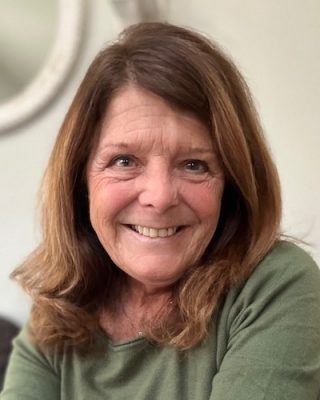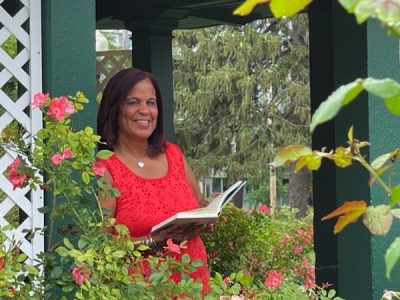Now in the third act of their distinguished careers, Patricia Floyd-Echols G’83, G’95 and Patricia Charboneau G’08 continue to demonstrate a commitment to training the next generation. Both of these Syracuse University School of Education (SOE) alumna are former teachers and school administrators. In retirement, they supervise student teachers throughout their classroom placements as field supervisors.
Field supervisors are critical to SOE’s mentored placements model that prepares student teachers to lead their classrooms from day one. As seasoned educational professionals, Floyd-Echols and Charboneau bring a wealth of experience to their roles, offering feedback and insight to successfully merge textbook lessons with classroom immersion.
“One can’t learn how to teach kids without the kids. You can’t duplicate real life experiences.”
—Patricia Charboneau G’08
Their experience resonates with the teachers-in-training they oversee because of the time set aside to reflect on what went well in the classroom and what improvements can still be made. Observations, feedback, and evaluations extend over three field sessions for each student, and the supervisors observe students teaching a variety of subjects, from English to math to inclusive education.
Glows & Grows

Charboneau taught for 23 years before switching to an administrative role as East Syracuse (NY) Elementary School principal. She describes her Field Supervisor role as akin to a support system. “In classes, teachers-in-training are given very specific guidelines on what needs to be covered during student teaching, and we are given those same guidelines,” she explains.
Prior to classroom observations, Charboneau reviews a student’s draft lesson plan, adding comments and questions. Following the evaluation, she meets one-on-one with the student teacher for a post observation conference. She likes to use this session as an opportunity for what she refers to as “glows and grows.”
“I’ll ask the student teachers what they think went well in the lesson—what was ‘glowing?’” she says, noting this can be a difficult task for self-effacing students. “It’s uncomfortable for students to brag about themselves, and they have a hard time with it.”
Next, the pair discusses the “grows,” or what could be improved and how a lesson can be modified for a better response from their young charges. “This is when I can pinpoint certain things and suggest other strategies to try.”
For example, Charboneau might have seen that an elementary student was off-task and the student teacher didn’t notice. In this instance, she might suggest that the student teacher walk around the classroom, to spread themselves around more. “I want to emphasize the good they are doing, so they can take it with them. It’s about filling that toolbox with as many strategies as they can.”
Turn & Learn

Charboneau says she even picks up new strategies from her student teachers. “I learned something so cool recently from one of my students,” she shares. “It’s such a little tweak on something everyone’s been doing forever that makes it so much more effective.”
A typical classroom strategy is to tell students to turn and talk with a neighbor about the lesson just delivered. “Instead of calling that ‘turn and talk,’” Charboneau says, the student she observed called it “turn and learn.”
“Because you don’t want the kids just talking about anything. They could chat about what they’re going to have for lunch. ‘Turn and learn’ means you have to share what you just learned,” she observes. “It just takes it to another level. I think it’s a great strategy.”
Having offered a powerful example of why classroom immersion is so important, Charboneau recalls that during the coronavirus pandemic, SOE students had a set-back because they missed two blocks of field placements.
“The student teachers were using instructional strategies with their peers, and it’s not the same,” she notes. “I mean, kids are kids—they are going to respond a certain way. They may not understand the concept. They may get frustrated. So, the more hands-on practical experience student teachers can get, the better.”
“What’s the Why?”
Floyd-Echols, who served in the Syracuse City School District for 39 years, including as principal at Dr. King Magnet School, agrees just as strongly as Charboneau about SOE’s high-touch training model.
“I’m here to push you to think about the bigger picture.”
—Patricia Floyd-Echols G’83, G’95
In particular, Floyd-Echols applauds Syracuse’s program for how soon student teachers gain field experience, which can begin as soon as their freshman year. “The sooner teachers get in with kids, the more practice they’ll have,” she says. Putting them at ease, she always tells her student teachers that her job is to “make them a great teacher, not catch them having a bad day.”
“I say, I’m here to push you to think about the bigger picture,” she adds.
Based on her nearly four decades of experience, Floyd-Echols advises student teachers to ensure lesson plans are meaningful, something that was ingrained in her early on.
“When we sit down to debrief, I pose the following questions, ‘What did you want the kids to be able to do by the end of the lesson? Did you get there? If not, what will you change next time?’” In this way, she explores how a lesson connects content matter to the students’ learning.
Floyd-Echols offers the following example. “Say a student led a lesson on dinosaurs,” she begins. “What are the young pupils doing with that information? Lessons need cohesiveness, so I will ask, ‘How does this lesson connect? If you talked about dinosaurs, are you going on a prehistoric fossil hunt? What’s the why?’”
Very Rewarding Work
In her reviews, which she calls “debriefings,” Floyd-Echols makes time to sit with the student teachers to provide constructive feedback on how to make improvements. The goal is for lesson two to be better than lesson one. “Mistakes will be made and that’s OK, but learn from them,” she says.
Designing the inclusive education program at Ed Smith was a highlight of her career, says Floyd-Echols. She says the strategies she learned as a special ed teacher are just as valuable for general education, noting all students need individual teaching plans.
When she earned her teaching degree, she recalls, teachers pursued either a general education or special education certificate—but now they can earn both. (For instance, SOE’s bachelor’s degree program in Inclusive Elementary and Special Education (Grades 1-6) leads to New York State initial teacher certification in both Childhood Education (Grades 1-6) and Students with Disabilities (Grades 1-6)).
General and special education training “makes you versatile,” Floyd-Echols says of opportunities teachers-in-training have now. “It also gives the school and the principal a lot of flexibility.”
Floyd-Echols believes teaching must come from the heart, a trait she can see shine through in those who dream to be teachers. “The more time to see the craft and work at it, they will understand it’s hard work, but also very rewarding work.”
Ultimately, SOE’s immersive and mentored training is the best model for new teachers, Charboneau believes, because of its hands-on nature. “One can’t learn how to teach kids without the kids,” she concludes. “You can’t duplicate real life experiences.”
By Ashley Kang ’04, G’11 (a proud alumna of the M.S. in Higher Education program)
Learn more about the School of Education’s teacher preparation bachelor’s degree programs or contact us at SOEadmissions@syr.edu.
